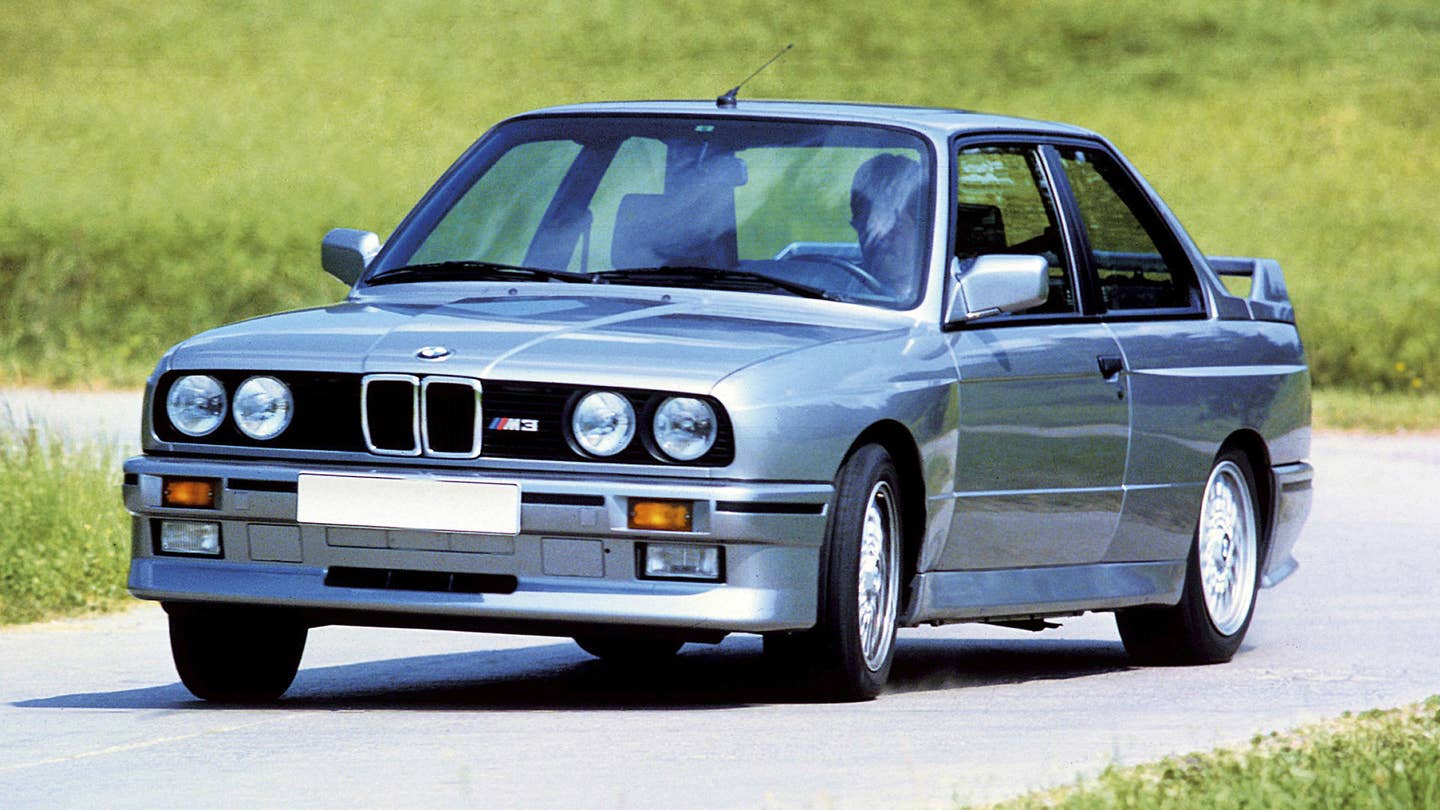How Gen X Will Blow Up the Vintage Sports Car Market
A whole lot of affordable classic cars are about to become unattainable.

Generational shifts are difficult to pin down. There’s no ceremony, no official torch passing. Baby Boomers, Generation X, Millennials—it’s all arbitrary, so arbitrary nobody really agrees where they begin and end. Here’s a far less (read: not at all) scientific but much more effective method for placing people into cohorts: What is Bob Dylan to you? There’s Dylan, Folk Godhead. Dylan, Poet Agitator. Dylan, Man of God. The average American achieves peak income around 50-years old. Brace yourselves: The Dylan CD box set generation is nigh.
That’s going to skew the vintage car game. Tomes have been written about the market boom during the past two decades, and not for nothing. There are now more than five million collector cars in the U.S.; roughly 60 percent of those are owned by people born between 1946 and 1964. The totems of their formative years, Grand Prix racing and Mopar and Shelby and Italian glamour metal, have all blown up the auction block. There are complex economics at play here, sure. But don’t discount sociology.
“For years, that has been and, really, remains the best predictor,” says Dave Kinney. He’s publisher of Hagerty Price Guide, a man occupying the space between master appraiser and sheet metal oracle. “The so-called ‘poster cars,’ the cars that were on someone’s wall. If I ever get rich, I’m going to own one of those. It’s an imprint, cars imprint on people’s lives. That happens.”
The E30 BMW M3 is indicative of the next big market swing. Built sparingly from 1988 and 1991, this was one of the last great attainable analog sports cars. For years, you could pick up a clean, original runner for around $25,000. Then, between 2013 and 2015, the value of a show-quality example went from $36k to $105k. Last week, an Ohio dealer listed a pristine 1991 M3 for $199,990. People laughed. Then it sold.
“We still don’t know yet if it’s an outlier, or a shot across the bow,” Dave says. “But when something like this happens, it’s a ground-pounder. It’s an earthquake.”
Madness. Yes, this particular M3 was the last North American car built and once owned by F1 driver David Hobbs, which is cool but also totally peripheral. The E30 M3 is a great car, an important car. But fundamentally, it’s just a lovely old semi-rare BMW with some racing pedigree. Two-hundred grand? Keep an eye out for the other three horsemen soon.
More important is what this car means. If you were college-aged when it showed up, the original M3 is king shit; the ramping up of prices coincides almost exactly with that cohort climbing to the age of peak income. Car guys who are in their prime buying years right now have exploded prices of early Eighties exotica (see: Lamborghini Countach LP400S, from $140k to $550k in two years) and Smokey and the Bandit Trans-Ams (you must be joking). Generational shifts may be difficult to pin down, but in terms of the collector car market, a $200,000 M3 sure feels like the start of one.
So what happens next? The “video game cars,” Kinney says, are coming. The tech boom will only drag that peak income age down, herding the next pack of “imprinted” cars into collectability quicker than the last. Don’t be surprised if semi-affordable, Clinton-era metal starts going bonkers over the next decade.
“We’re already beginning to see movement in some cars from the 1990s, and even the early 2000s. They’re going from ‘used cars’ to ‘collectible cars’ in a nanosecond.”
That’ll put stuff like an early Dodge Viper or Lotus Esprit Turbo or Toyota Supra out of reach for a lot of enthusiasts. Not just the show-quality examples, but also the daily drivers, those everyday Craigslist finds. It’s already happening. Kinney puts its bluntly: “The days of the ‘nice $25,000 Acura NSX’ are behind us.”
The rising tide lifts all ships, even the ones that already have flood damage. So pour one out for the beaters and basket cases, too.
“If nothing else, they start getting bought up for parts and spares,” says Dave. “Especially from that early digital era, where cars were still fundamentally analog, something like an ECU computer might cost $3,500. So if you can buy a $2,500 project car, why not? Those start disappearing, and increasing in value, as well.”
And that’s the real shame of the thing. Club racers used the treat E30 M3s like what they are: Neat-but-ultimately-disposable sports cars, ideal sub-$20k track rats. You see some on the forums with 250,000 miles, because people actually drove them into the ground. The $199,990 M3 isn’t a loss for collector car shoppers—those people already exist in their own sphere, just barely tethered to reality. It’s a loss for the rest of us, because it’ll pull non-collector E30 M3 prices up with it, from attainable to impossible. Eventually, the vintage analog sports car will cost more than the average boring new sedan. Who’s ready for the first $200k base model Audi Quattro? Kinney says you’d better believe it.
